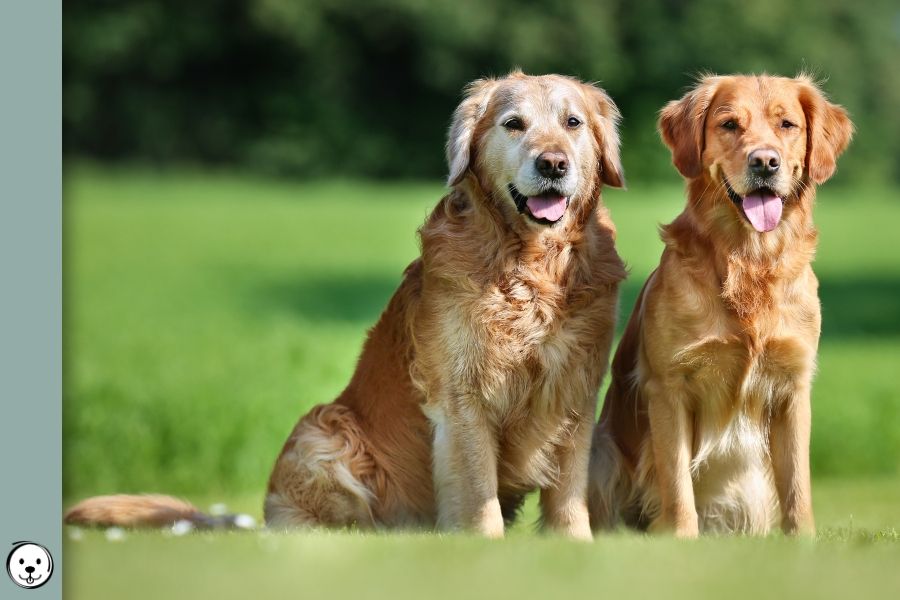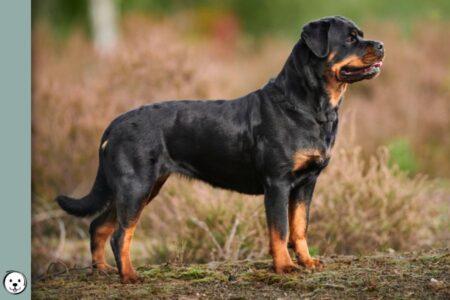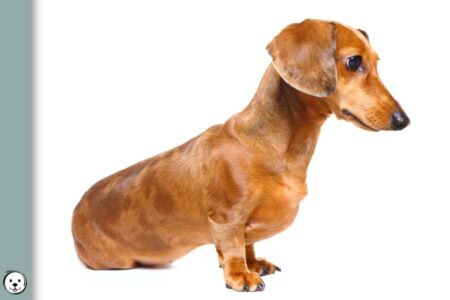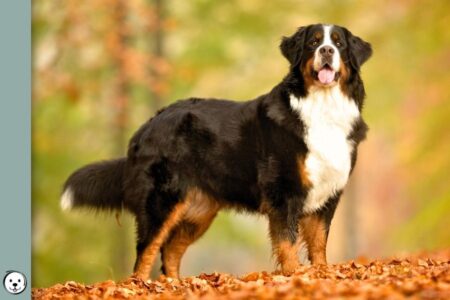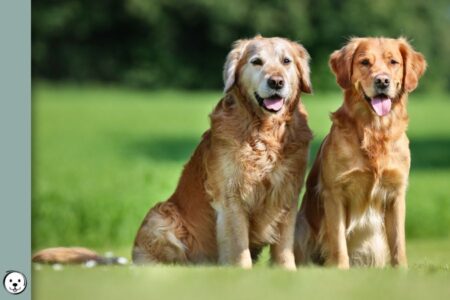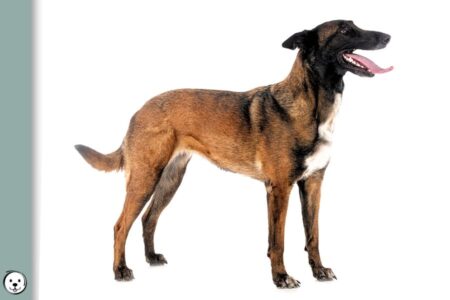The Golden Retriever is a biddable hunting dog breed that is also very popular as a family pet. Find out more about the different shades of golden that make up the Golden Retriever coat colors.
Golden Retriever Color Chart
An overview of Golden Retriever colors and their genetics.
| B/B e/e black-based recessive red | |
| off-white “English cream” cream |  |
| light golden golden dark golden | 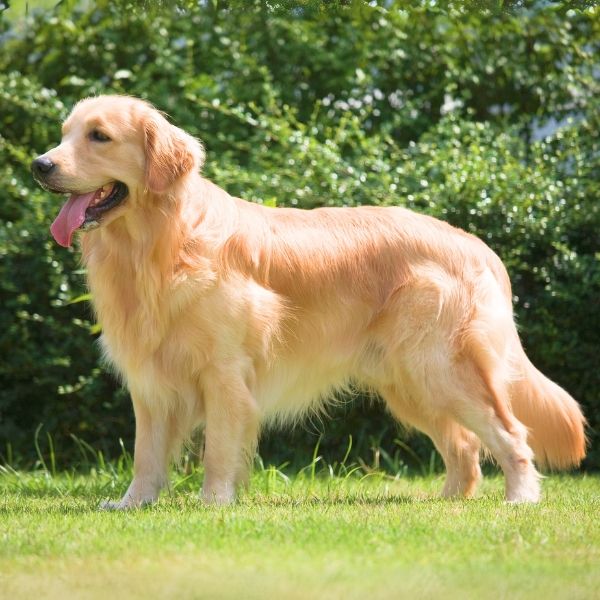 |
| fox-red mahogany setter-red |  |
Golden Retriever Coat Colors Overview
The breed standard describes all the different traits a Golden Retriever should have.
This includes its ideal temperament and conformation including coat texture and coat colors.
The major kennel clubs typically use their own standards provided by their affiliated breed club. These standards are usually similar in their general outline but may differ in some details.
Let’s see what different clubs have to say about the accepted Golden Retriever coat color patterns[1-3]:
| AKC | FCI | KC | |
|---|---|---|---|
| Cream | (✅) | ✅ | ✅ |
| Light Golden | ✅ | ✅ | ✅ |
| Golden | ✅ | ✅ | ✅ |
| Dark Golden | ✅ | ✅ | ✅ |
Standard Golden Retriever Coat Colors
All Golden Retrievers are recessive red. The have two copies of the bottom recessive allele at their E locus (e/e). This prevents them from having any black in their coat. They can only make red pigment.
The color intensity of their red coat can vary.
And there is a gradual continuum of phaeomelanin colors.
Unfortunately, there is no real definition of breed terms. That means there’s plenty of room for subjective opinions, such as where a “cream” turns into a “light golden” color.
Let’s have a closer look at the the different Golden Retriever colors and their breed terms:
English Cream Golden Retriever (aka Super Pale Cream or White)

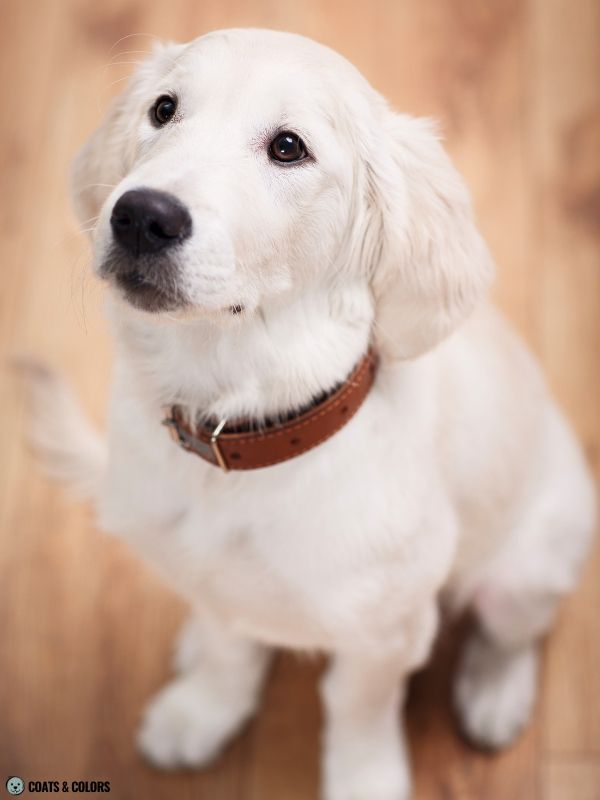
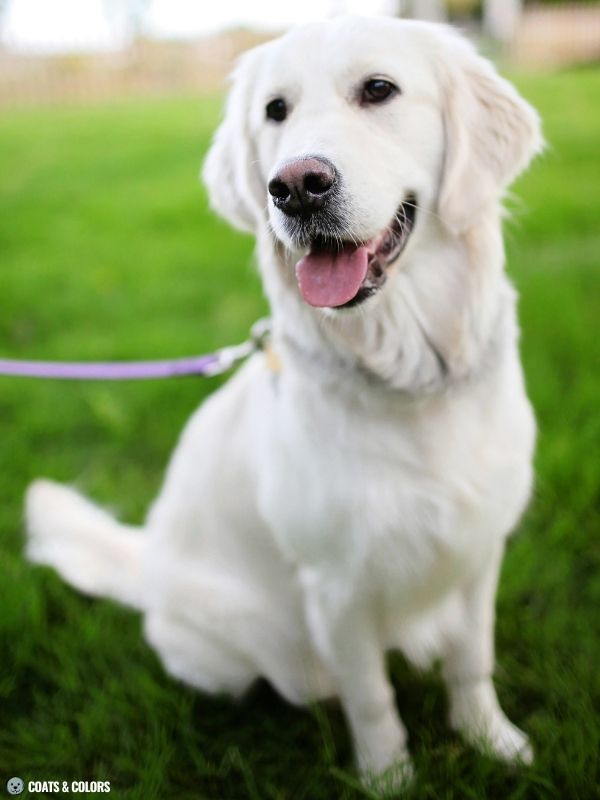
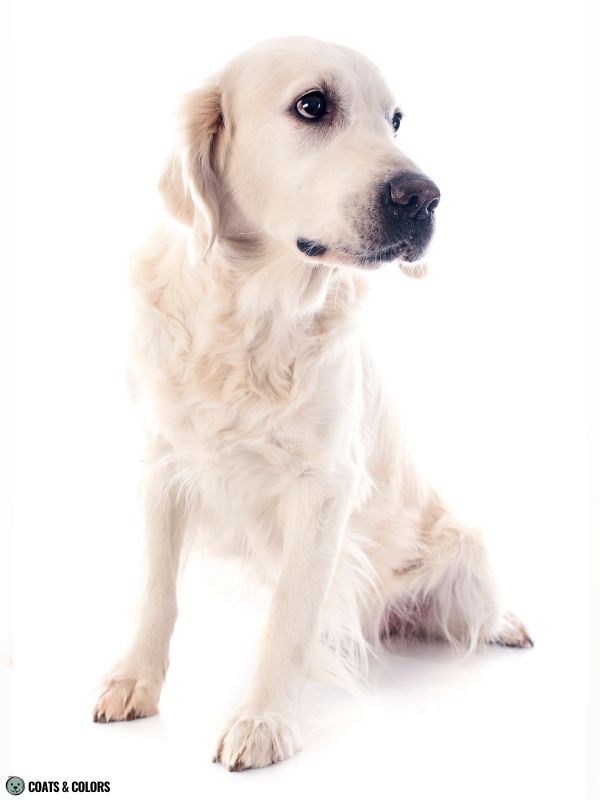

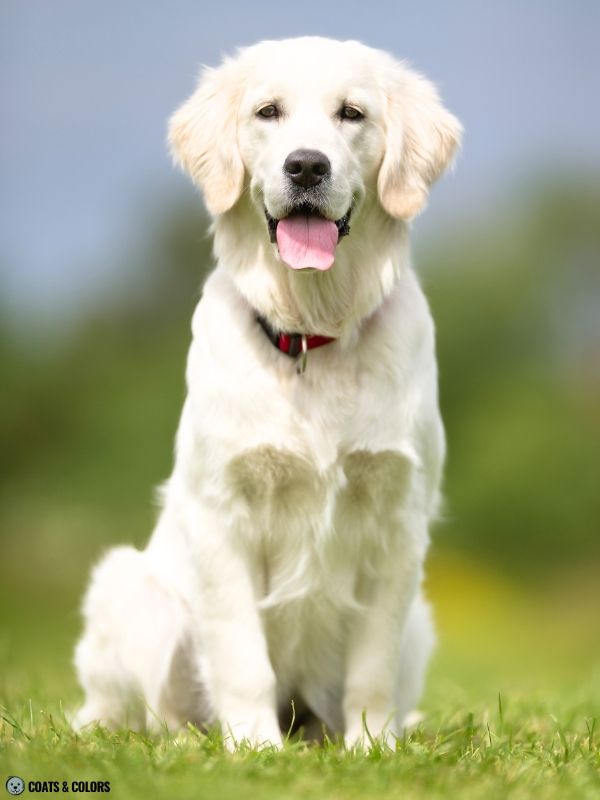
Very pale cream Golden Retrievers can be so light they appear off-white.
They have a recessive red pattern (e/e) with a very low phaeomelanin intensity.
Somehow this very light coat is attractive to some puppy buyers.
This has led to a fad of breeding ever lighter creamy white–colored or even pure white Golden Retrievers that no longer justify the name “golden”.
Labels such as “Platinum“, “White European” or “English Cream” for very very pale Golden coats are just internet marketing strategies and not real breed terms.
Cream Golden Retriever
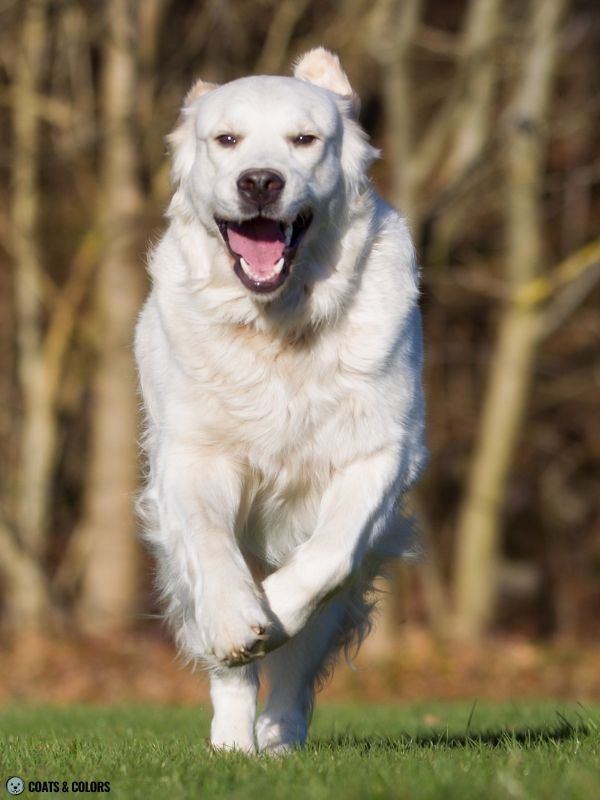
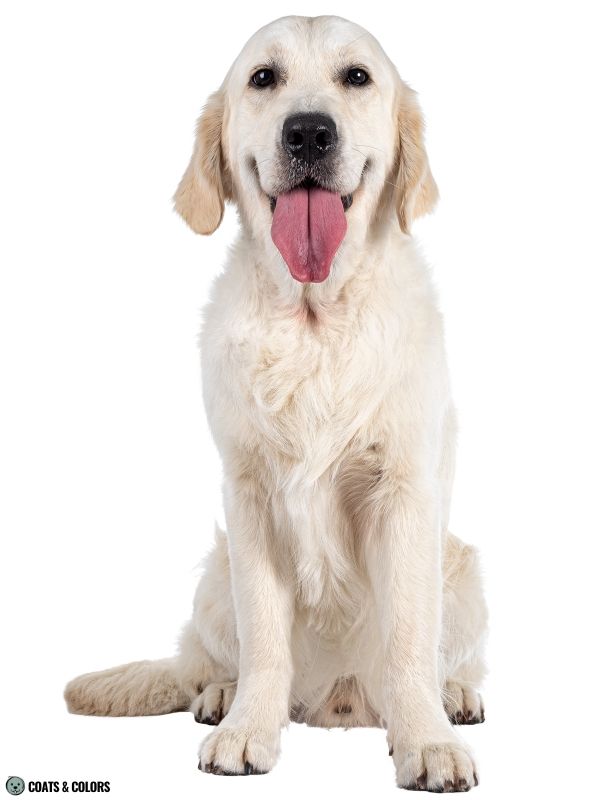
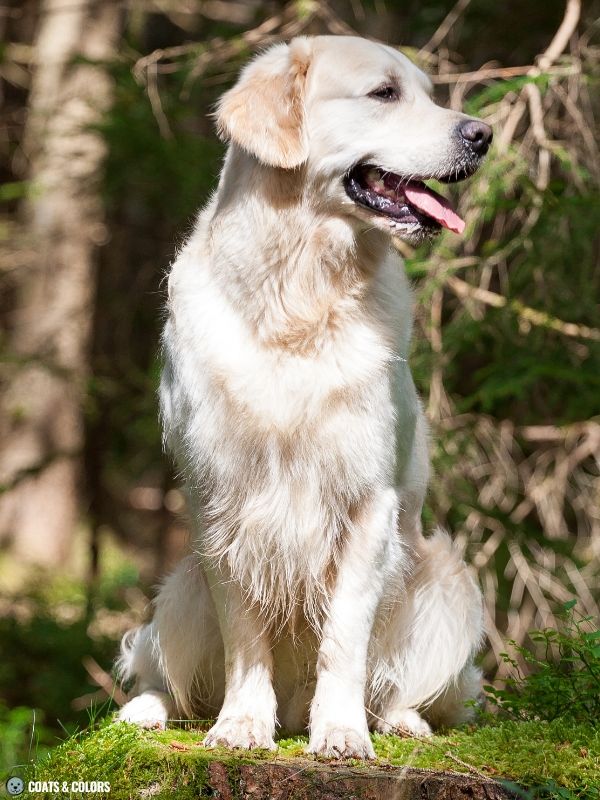
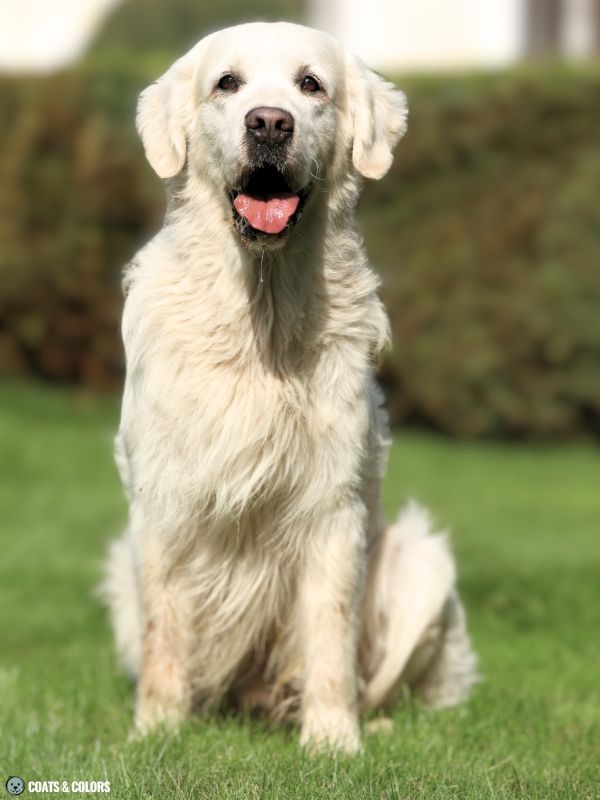
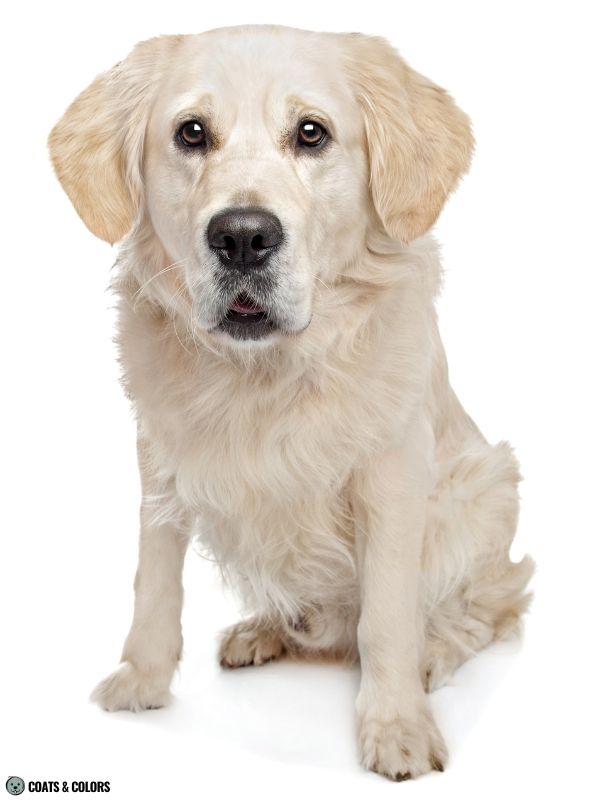
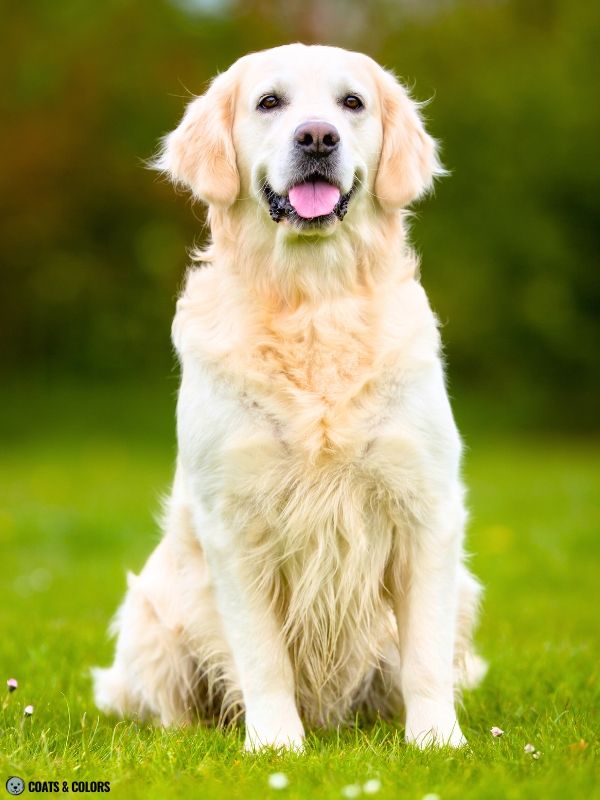
Cream Golden Retrievers have a recessive red pattern (e/e) with a low phaeomelanin intensity.
They have a very light coat, which makes them too pale to be classified as “light golden“. But they have a big enough hint of visible yellow to not appear white.
The FCI breed standard includes “cream” as an official color while the AKC standard seems to just tolerates Goldens with a too pale whitish yellow coat.[1,2]
Light Golden Golden Retriever
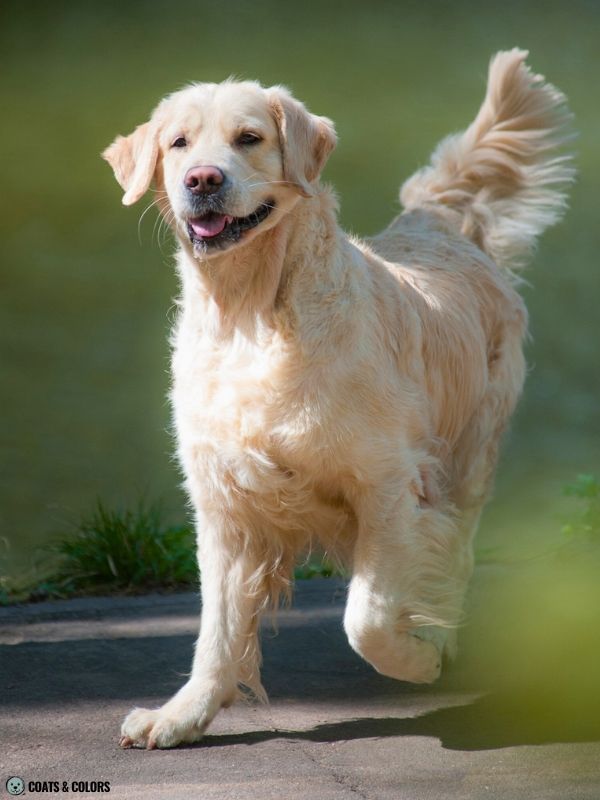
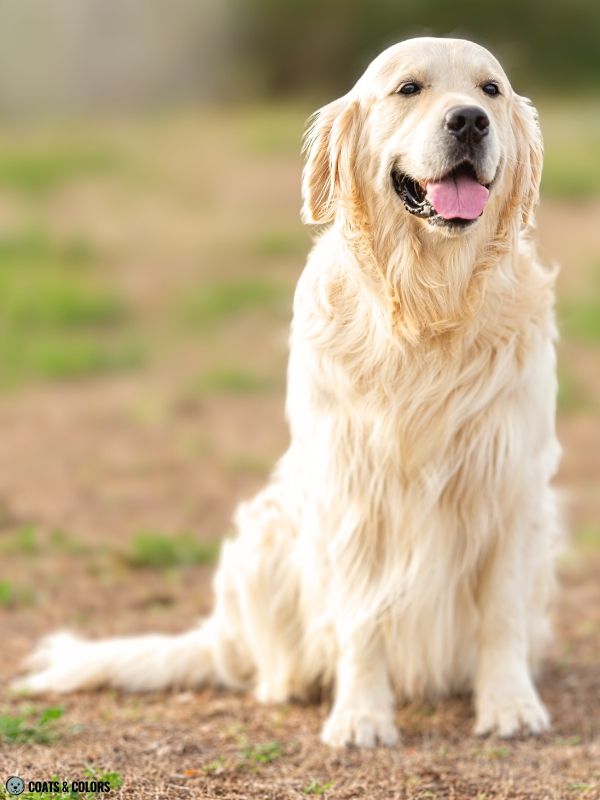
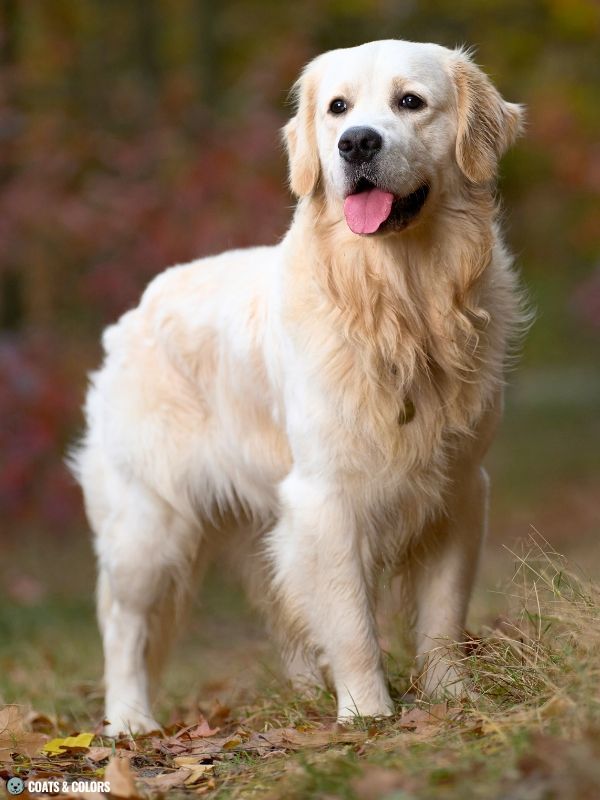
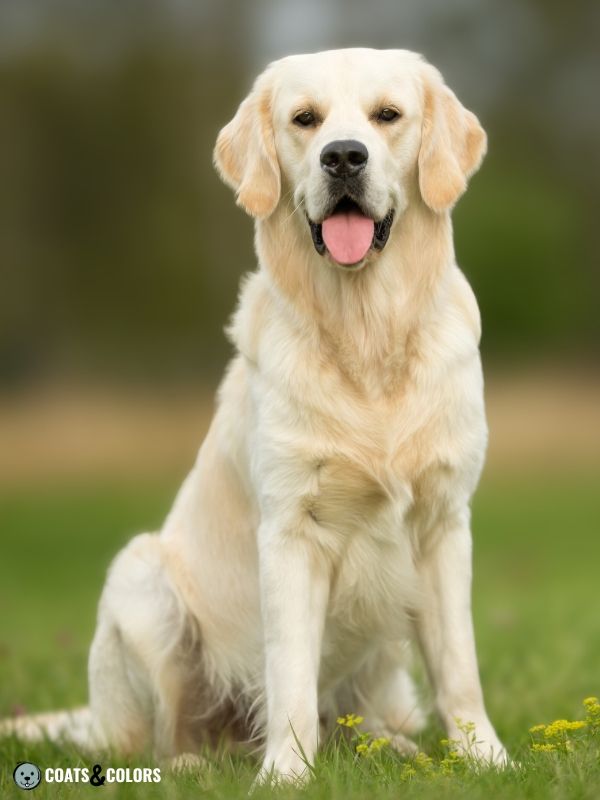
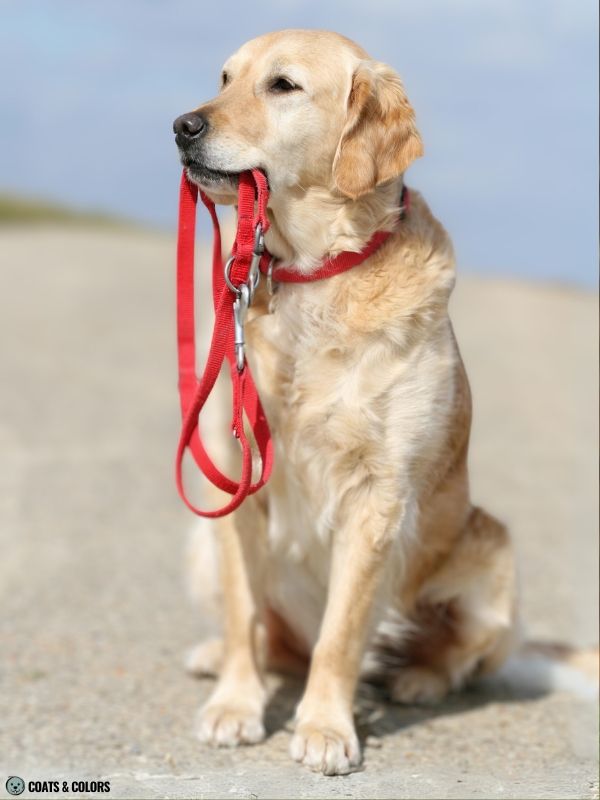

Light Golden Golden Retrievers have a recessive red pattern (e/e) with a low-medium phaeomelanin intensity. These dogs appear clearly “yellow“, but with a rather light shade of golden.
Golden Golden Retriever
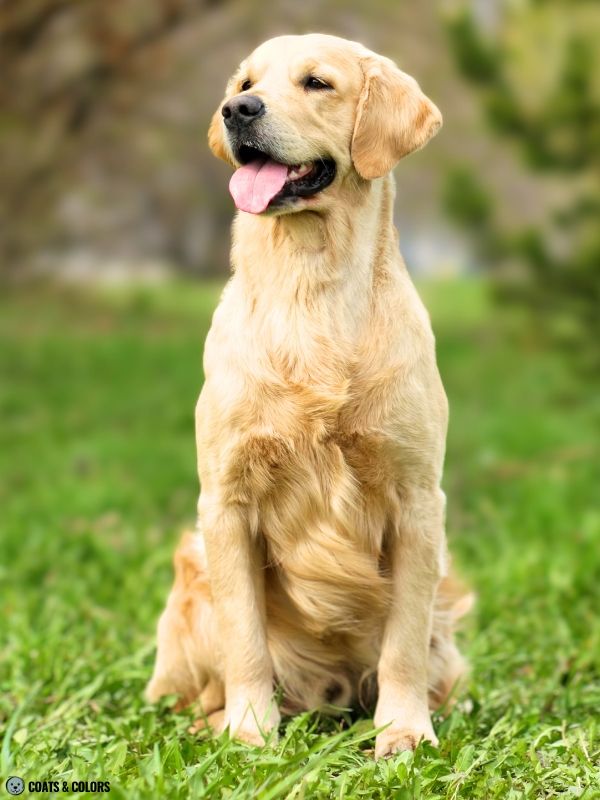


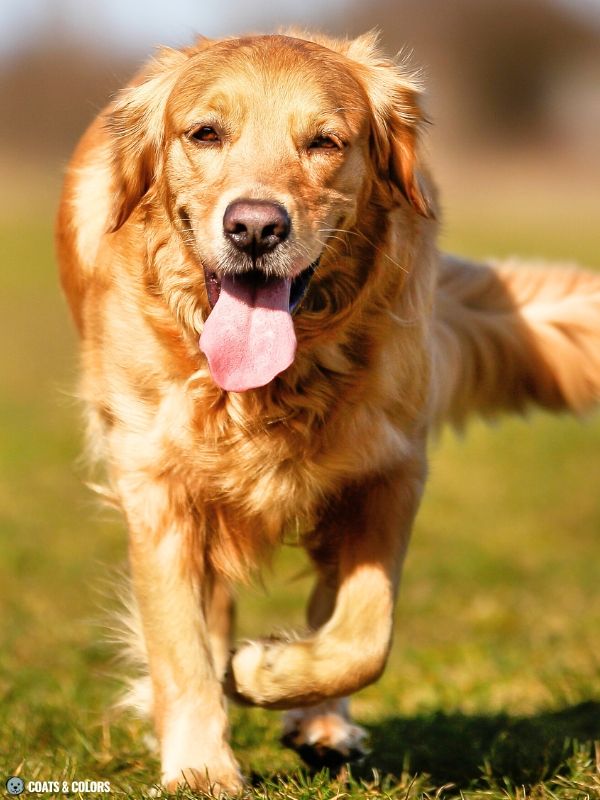
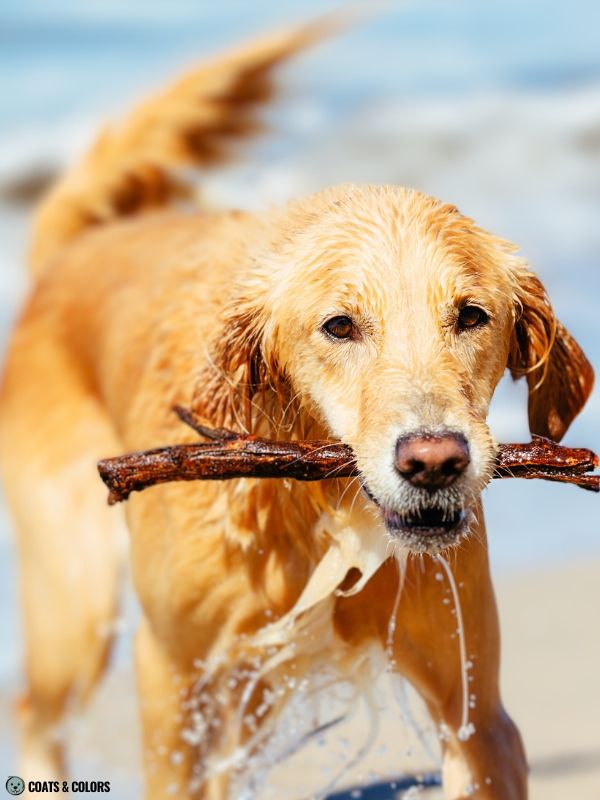

These Golden Retrievers show a medium phaeomelanin intensity in their recessive red pattern (e/e). They have a rich golden yellow color and cover the color range between the lighter and darker shades.
Dark Golden Golden Retriever
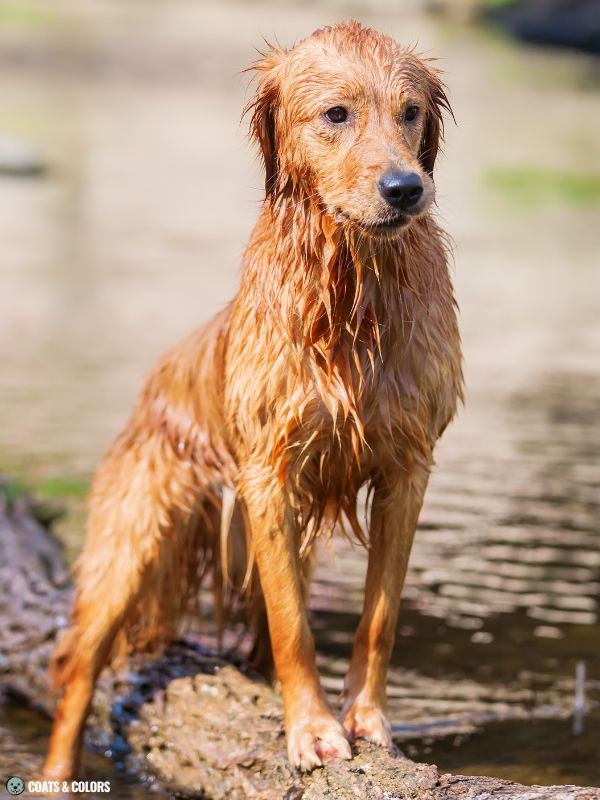
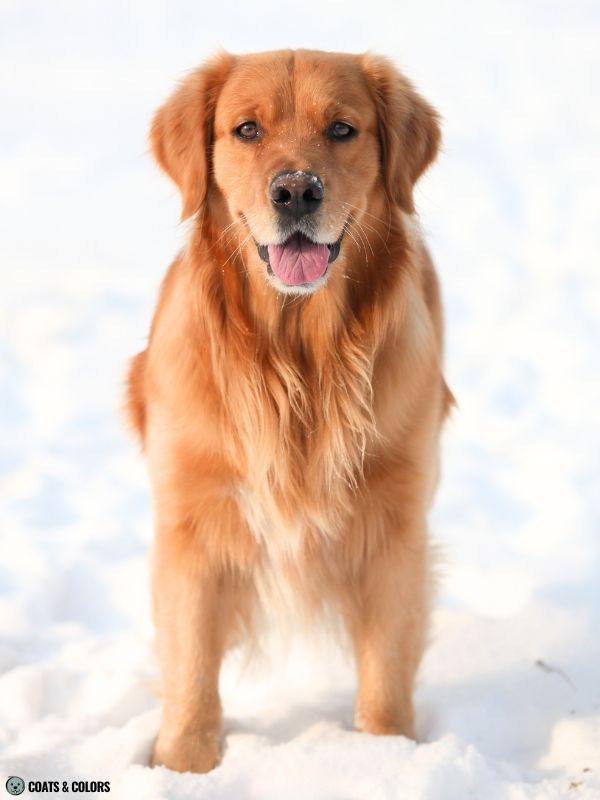
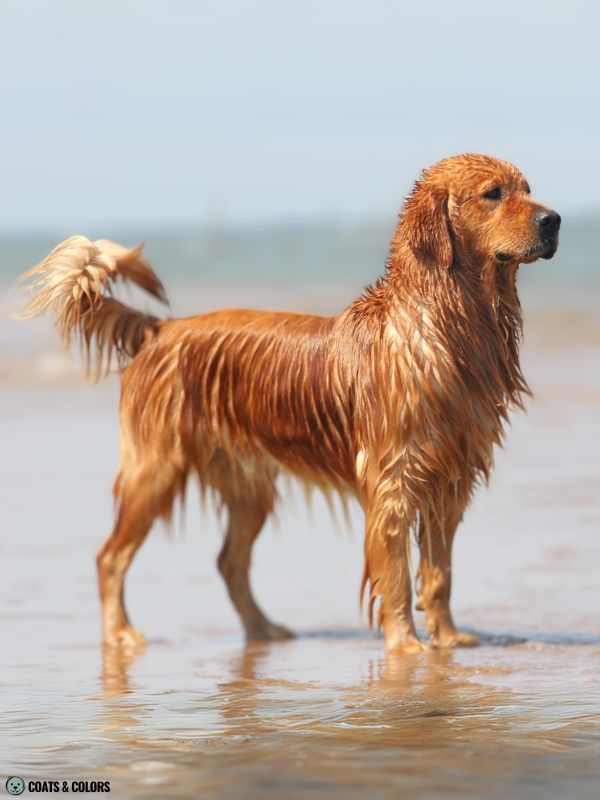
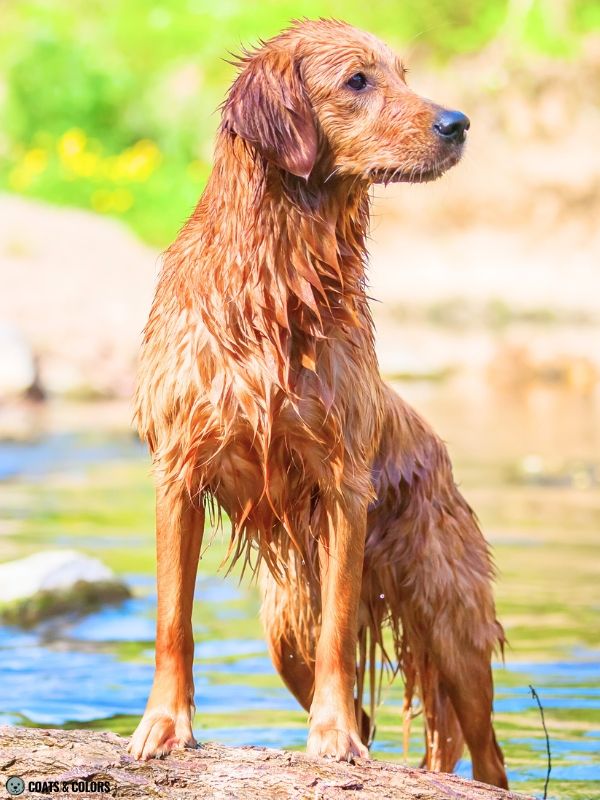

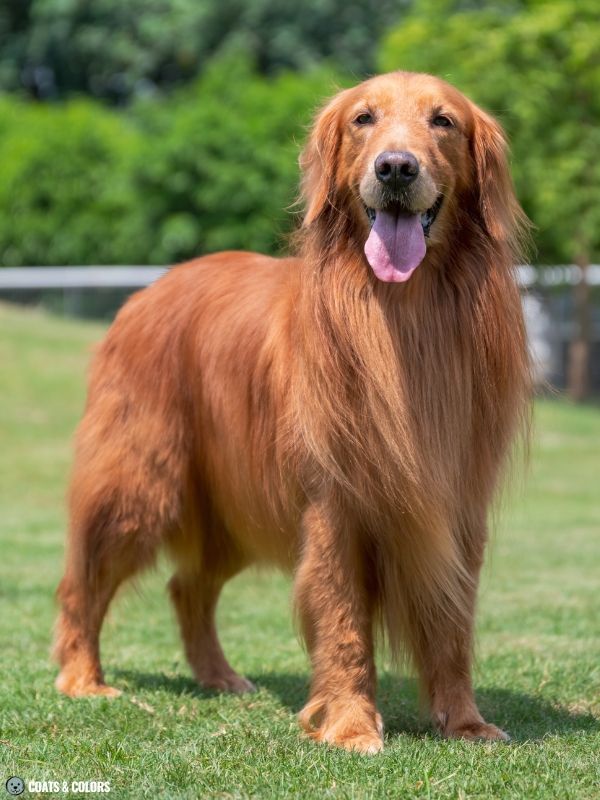
The recessive red pattern (e/e) on a dark golden Golden Retriever has a medium-high phaeomelanin intensity. Their dark yellow coat can border on orange without being red.
Red Golden Retriever (aka Setter-Red, Fox-Red, Mahogany)
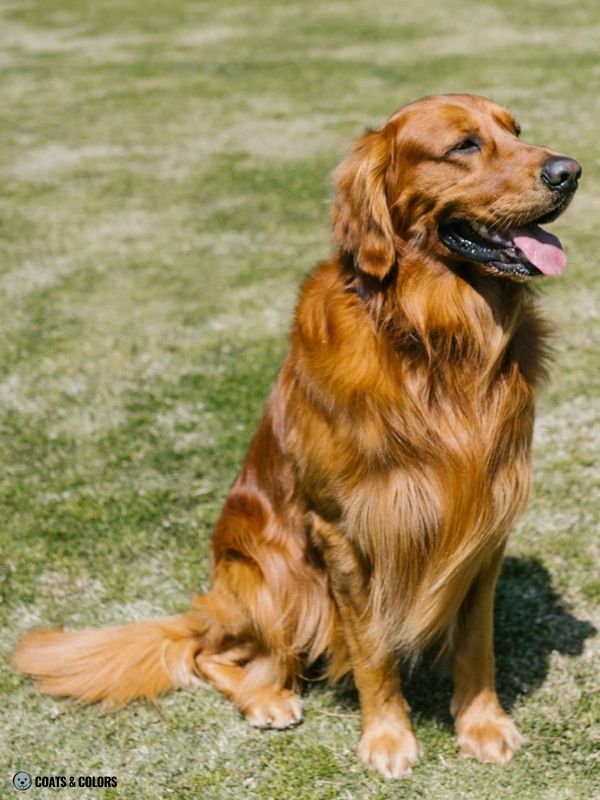
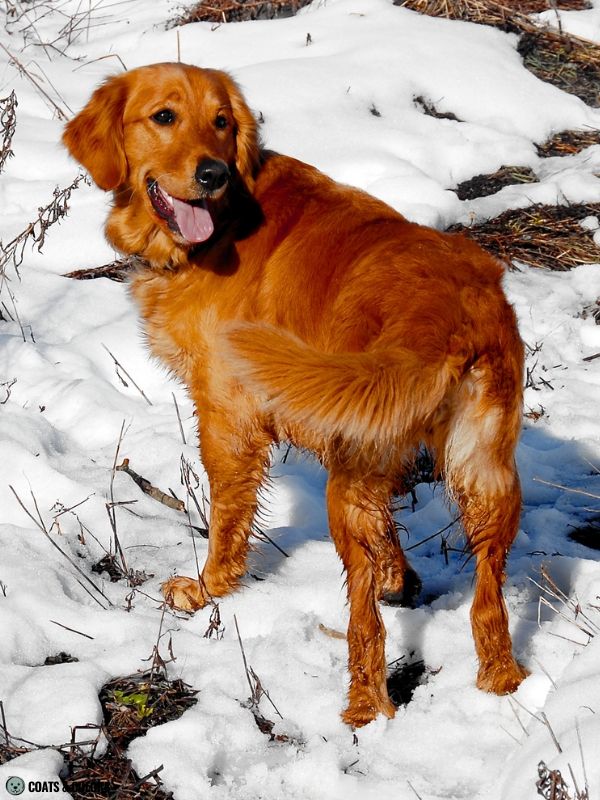

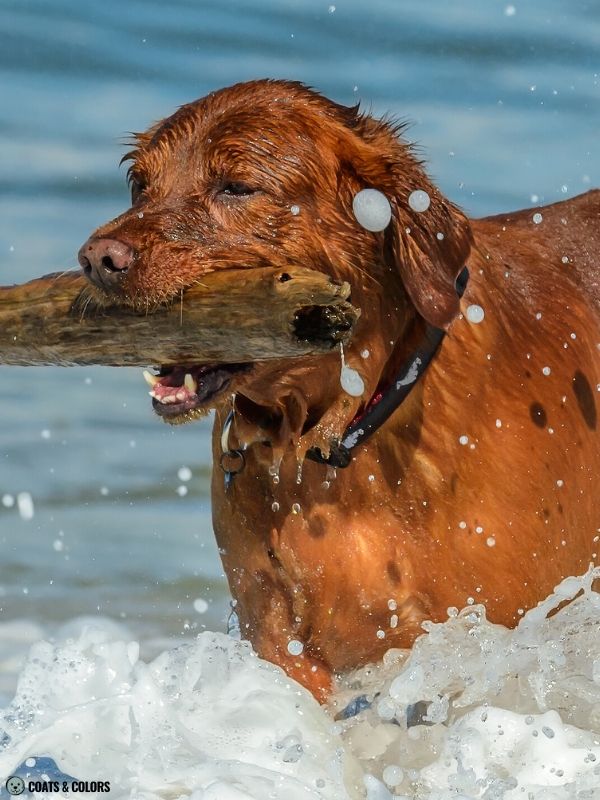


Any phaeomelanin intensity that goes beyond dark orange-golden can be termed “red“.
These dogs are still recessive red (e/e) but their coats range from dark orange-red (“fox-red“) to mahogany to a deep chestnut color that resembles the red coat you can see on Irish Setters.
Golden Retriever Coat Color Genetics
A dog’s coat gets its colors from two pigment types called eumelanin and phaeomelanin.
These are the genes and alleles involved in Golden Retriever’s coat colors and patterns:
| E-LOCUS | e = recessive red |
| K-LOCUS (doesn’t show on e/e) | KB = dominant black kbr = brindle ky = wild type, enables normal pattern |
| A-LOCUS (doesn’t show on e/e) | at = tan points (ASIPBB) a = recessive black (ASIPa) |
| RED INTENSITY | white cream light golden golden dark golden fox-red mahogany |
| B-LOCUS | B = black eumelanin b = brown eumelanin (rare!)[4] |
| D-LOCUS | D = normal eumelanin |
| S-LOCUS | S = solid |
| M-LOCUS | m = non-merle |
Golden Retriever Basic Patterns
The A locus, K locus and E locus control all basic pigment distribution patterns.
They tell pigment cells when and where to make either eumelanin or phaeomelanin.
E Locus
All Golden Retrievers are recessive red (e/e).
This means they can only ever produce phaeomelanin in their hair.
This is what gives them their solid yellow coat with no hint of black. Even their whiskers will be white.
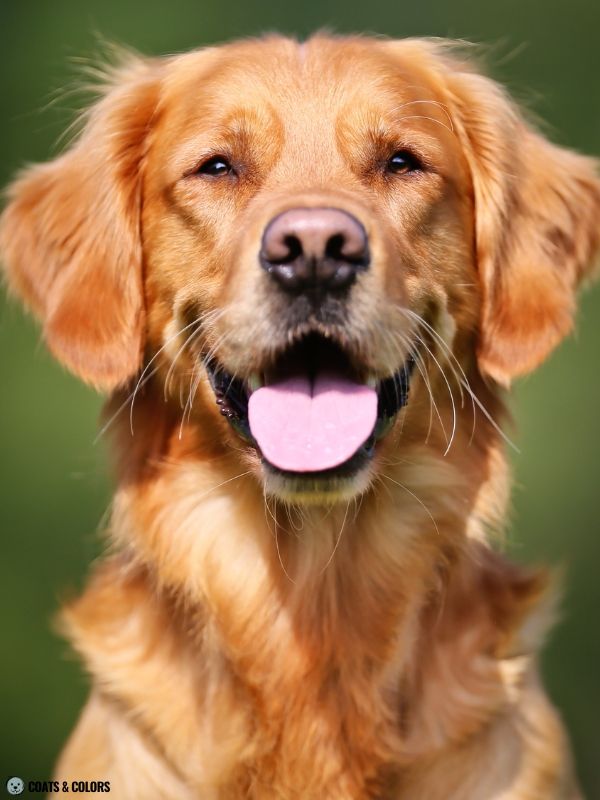
The breed originated from the odd yellow specimens of the otherwise black Wavy Coated Retriever. Of course, black dogs can produce yellow puppies if both are e carriers (E/e x E/e).
Several other dogs such as the Irish Setter or Labrador were used to create this breed. But by only keeping the yellow-colored puppies the Golden was soon fixed for a recessive red (e/e) pattern.
Before these “yellow retrievers” were recognized as a breed of their own and adopted the “Golden” name, they were registered as off-colored Flat Coated Retrievers.
A Locus
Most Goldens have tan points (at) hidden at their A locus.
Some have recessive black (a).
This doesn’t matter since these A locus variants require eumelanin. And Goldens can not produce eumelanin in their coat. The A locus gets overruled by their recessive red (e/e) pattern.
The judge’s education material on the Golden Retriever Club of America‘s website claim that “Some Goldens also carry pattern genes on the A locus that can affect the shading on the coat“.
This is not true! First of all, all dogs have something on their A locus and “carry a pattern gene” or the other. However, these A locus patterns do never show on recessive red dogs.

K Locus
Most Goldens are solid black (KB) or brindle (kbr), some have the wild type variant (ky) at their K locus.
This doesn’t matter since all K locus variants require eumelanin to show. And since recessive red dogs can not produce any eumelanin in their coat their K locus will be overruled by their e/e genotype.
Eumelanin Colors
Golden Retrievers have black eumelanin (B/B).
Even if not present in their coat color, it is always eumelanin you see in the nose, skin, nails, or eyes.

Phaeomelanin Intensity
Goldens only produce phaeomelanin in their coat.
Their red intensity is what makes the difference between Golden colors.
In essence, their color is essential in defining them as “golden“.
“Rich, lustrous golden of various shades. Feathering may be lighter than rest of coat.“
AKC Breed Standard
“Any shade of gold or cream, neither red nor mahogany.”
FCI Breed Standard
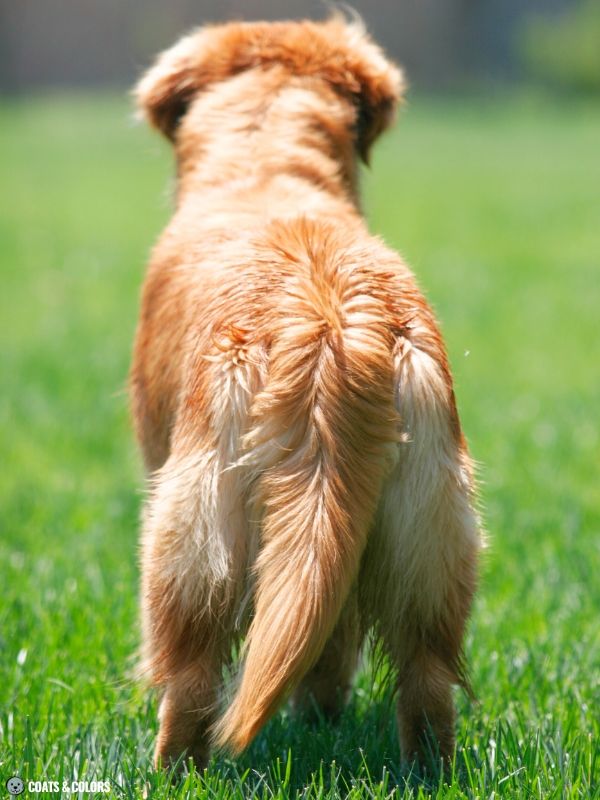
Goldens come in a range of colors.
And there is a rainbow of breed terms to describe the different shades of golden.
Some define the range as “very light cream to a dark golden red“.
Others name the same range as “pale gold through deep reddish gold“.
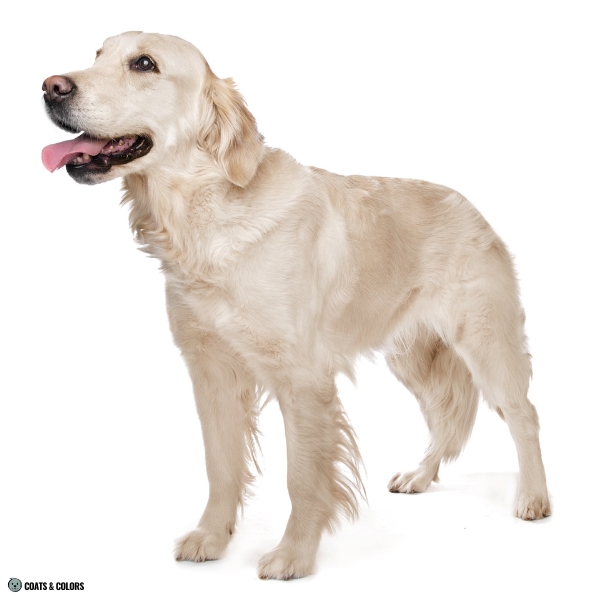
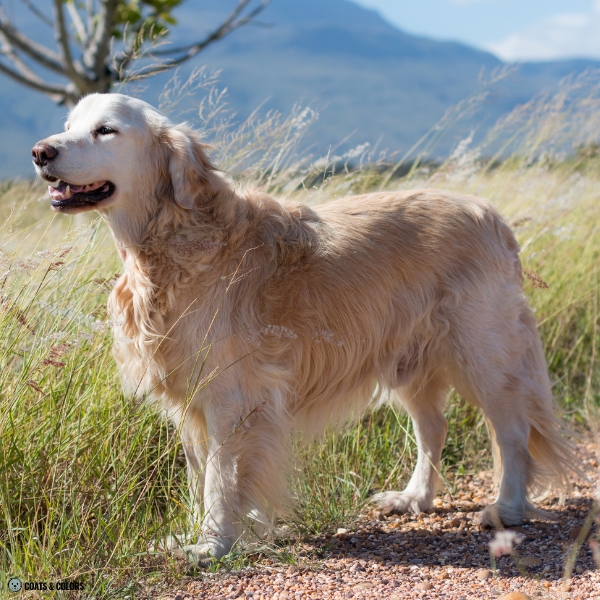




Their standards want them to have any “shade of gold“, after all, it’s in their name.
The more extreme whitish cream or deep fox-red coats are not preferred in the show ring[5]. But even an off-white or dark setter-red coat is just considered undesirable but not a major fault.
Some breeders have a preference for a lighter or a darker golden coats. But breeding and advertising just for one specific color should never be the most important goal when breeding dogs!
“Predominant body color which is either extremely pale or extremely dark is undesirable.“
AKC Breed Standard
In breeding, the more intense colors usually override the lighter colors.
So theoretically, two red parents can be low-intensity carriers and produce light-colored pups, but not vice versa. But the phaeomelanin intensity is multigenic and can be difficult to predict.
The amount of phaeomelanin in the hair causes this variation in color intensity. And recessive red puppies still build up pigment in their first year or so, it’s normal for them to darken quite a bit.

It’s also normal for this pattern to show some darker color on the ears or face. And many Golden Retrievers are prone to premature graying and often have a light-colored face at a moderately young age.
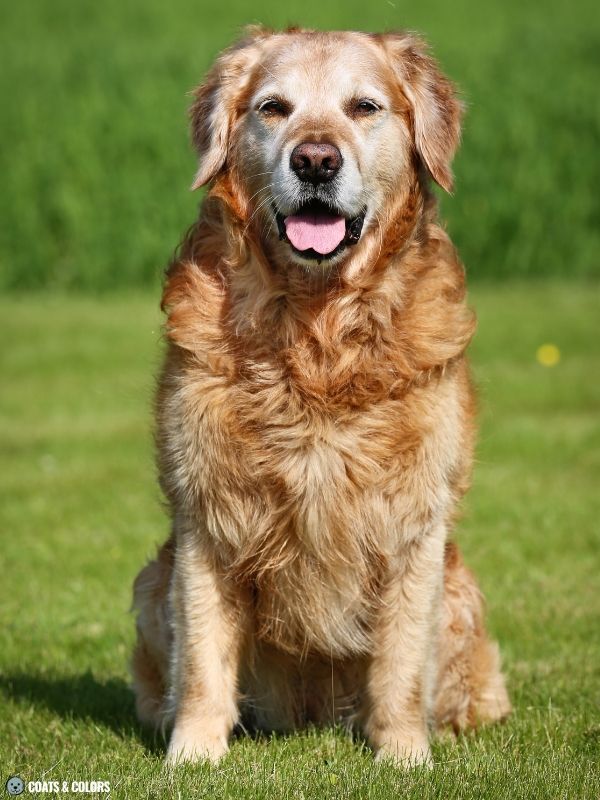
White Spotting
Golden Retrievers are solid-colored, they don’t have white spotting.
But some residual white like a thin white patch on the chest can sometimes happen.
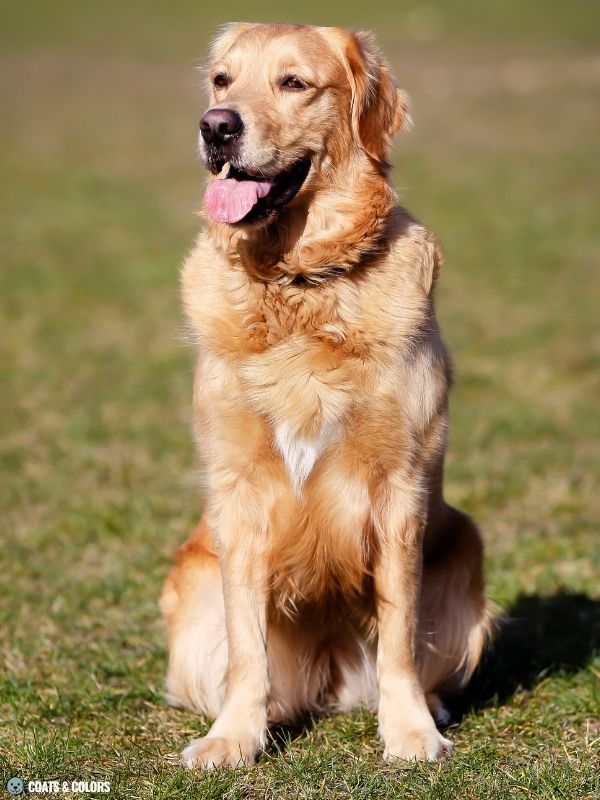
These small markings will shrink even further as long as pigment still keeps filing in. Only very few Goldens keep more than a tiny sliver of white hairs in their adult coat.
“With the exception of graying or whitening of face or body due to age, any white marking, other than a few white hairs on the chest, should be penalized according to its extent.”
AKC Breed Standard
“A few white hairs on chest only, permissible.”
FCI Breed Standard
Coat Color Genotypes
The accepted patterns in a dog breed describe the distribution of colors in a dog’s coat.
Many breed standards use breed terms without providing a proper definition.
| Color Term | Genotype |
|---|---|
| Cream | e/e B/B black-based recessive red + low red intensity |
| Light Golden | e/e B/B black-based recessive red + low-medium red intensity |
| Golden | e/e B/B black-based recessive red + medium red intensity |
| Dark Golden | e/e B/B black-based recessive red + medium-high red intensity |
| Red | e/e B/B black-based recessive red + high red intensity |
Golden Retriever Eye Colors
Golden Retrievers are fixed for black eumelanin (B/B D/D).
So whatever a Golden’s coat color, he will always have brown eyes with black rims.
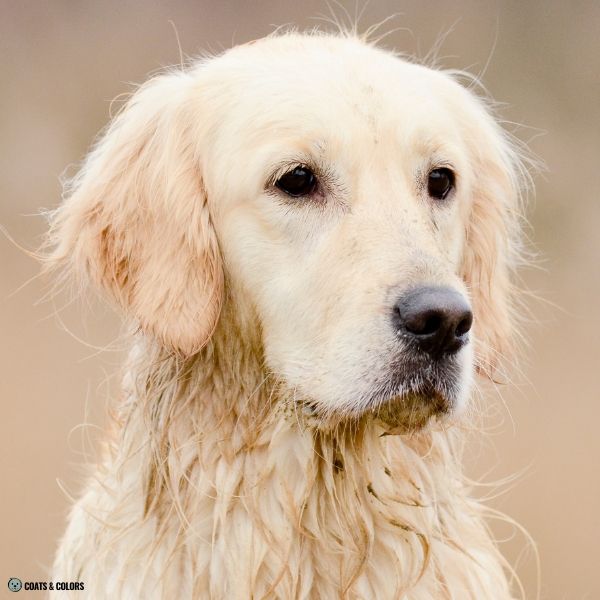
“Eyes […] medium large with dark, close-fitting rims […] Color preferably dark brown; medium brown acceptable.”
AKC Breed Standard
“Dark brown, set well apart, dark rims.“
FCI Breed Standard
Golden Retriever Nose Colors
Golden Retrievers are supposed to have black eumelanin (B/B D/D).
Their eumelanin color affects all their skin pigmentation as well.
The eye rims, lips, nails, paw pads, and the nose on a Golden will be black.
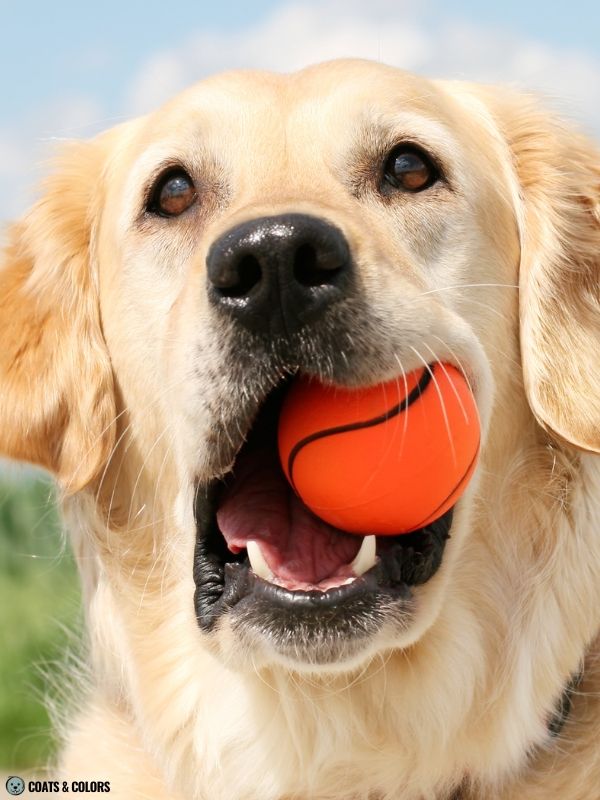
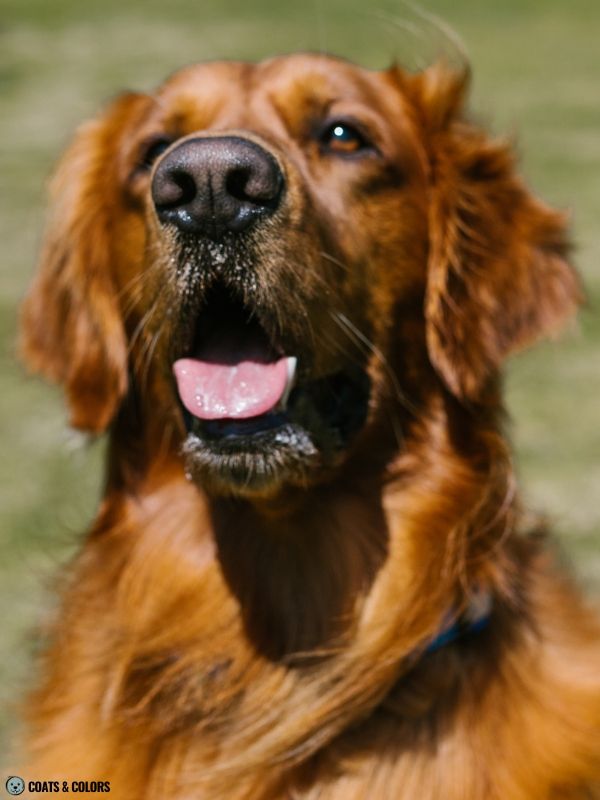

Their breed standards favor a solid black nose, of course.
However, their recessive red pattern usually causes some depigmentation of the nose. Almost all adult Goldies have some variation of snow nose, which can cause shades from taupe to almost pink.
The effect of snow nose is often seasonal.
“Nose black or brownish black, though fading to a lighter shade in cold weather not serious. Pink nose or one seriously lacking in pigmentation to be faulted.”
AKC Breed Standard
“Nose: Preferably black.”
FCI Breed Standard
Golden Retriever Mismarks and Fancy Colors
Goldens are supposed to be solid golden.
“Any noticeable area of black or other off-color hair is a serious fault.”
AKC Breed Standard
But non-standard colors occur in any dog breed.
The practice of crossbreeding to introduce new traits is not very common in Goldens.
The solid yellow coat is so characteristic for the breed (it’s even in their name) that people don’t tend to produce wildly off-colored “Not-So-Golden Retrievers” on purpose.
Black Golden Retriever
Remember, all Goldens are recessive red with an e/e genotype.
By borrowing a dominant wild type “E” allele from another breed (such as a black Flat Coated Retriever), you can get a solid black dog that resembles a Golden Retriever.
But any black Golden Retriever needs a parent with black coat, this is not some recessive throwback trait that just “pops up” randomly. Black Goldens are the result of crossbreeding.
If breeders cross back to Goldens while selecting for the black coat, they will come back as purebred in genetic testing at some point after a couple generations. This is not proof that these dogs are 100% Golden.
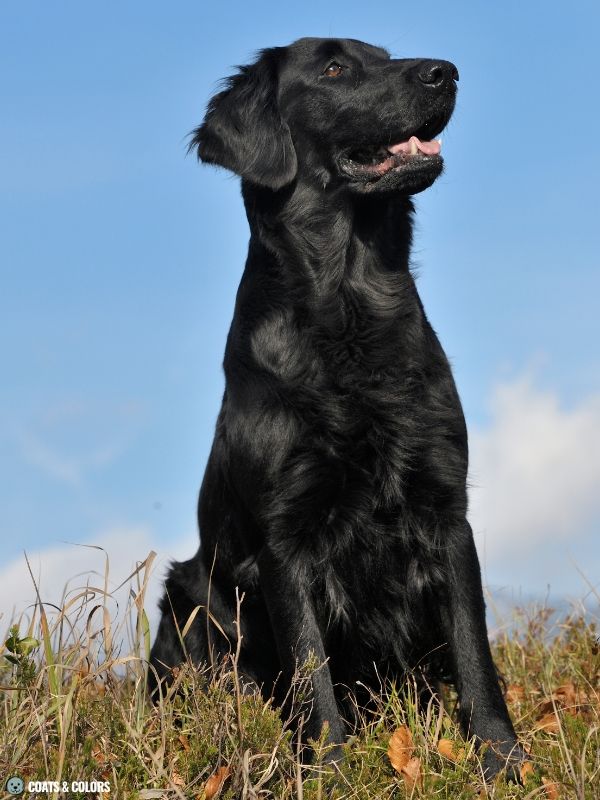
“Dudley”
Some other faulty colors happen by accident due to recessive alleles.
Having only one copy of a recessive trait is called being a carrier. This way, dogs may pass on these traits over generations without expressing them themselves.
Breeding two carriers can lead to homozygous recessive puppies which will express the trait in question.
In Goldens, this applies mainly to brown eumelanin.
Some Golden Retrievers are brown carriers (B/b).
Accidentally breeding two carriers can give brown-based recessive red (b/b). These dogs have a brown nose, brown eye rims, and yellow eyes and are sometimes called “Dudley“.
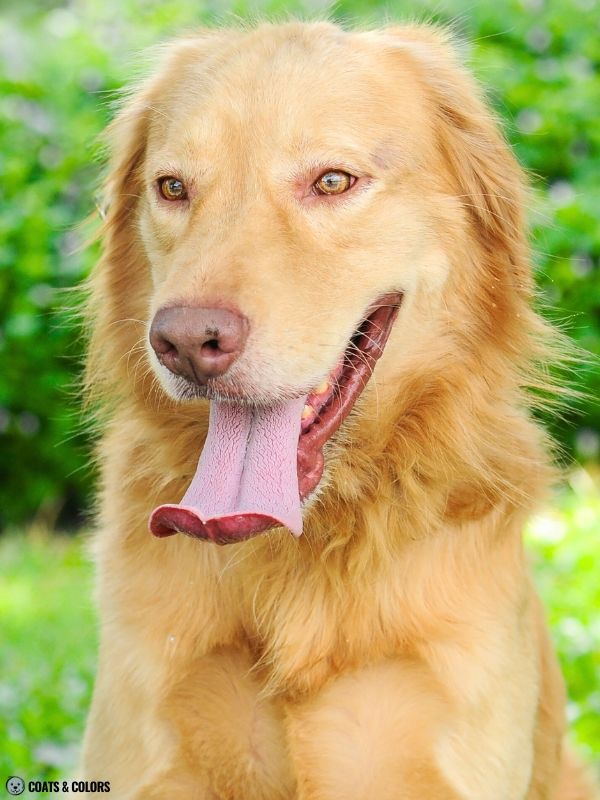
Somatic Mutation
Finally, a somatic mutation can cause black spots or single black hairs on a Golden Retriever.
Sometimes, a recessive red allele (e) in one of the body cells reverts back to its wild type state (E). This creates a situation where most body cells are e/e but some are E/e.
All the E/e cells will express their A and K locus which often gives black coat (what most Goldens have if their patterns was not hidden by their e/e genotype).
A somatic mutation only affects the body and will not be passed on to puppies!
Clear Sable
Many mixed breed dogs get labeled as “Golden Retriever” if they have a solid yellow coat.
But if you look closely, you can see that many of these “Golden deceivers” have black whiskers.
This is a telltale sign that a dog is in fact clear sable and not recessive red!
A truly recessive red dog like a Golden can not have black whiskers!

Golden Retriever Coat Types
Golden Retrievers are fixed for a long-haired coat.

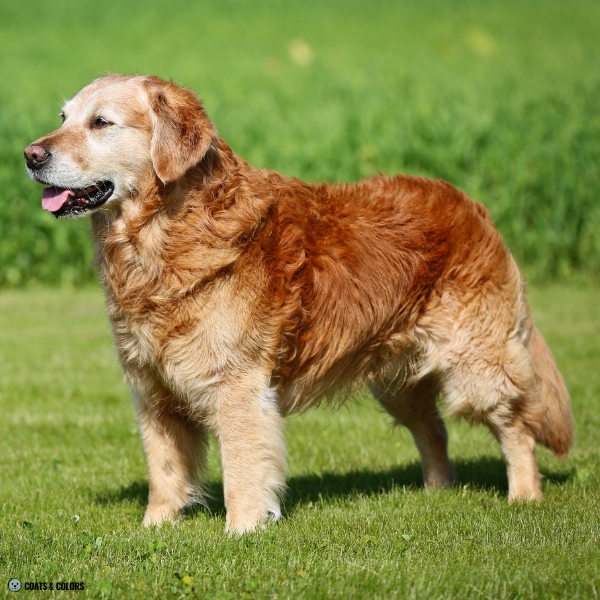
They have a natural ruff and can have quite some feathering on the back of their legs, chest, underbody, and the underside of their tail. However, the coat on their head and lower legs is short.
“Dense and water-repellent with good undercoat. Outer coat firm and resilient, neither coarse nor silky, lying close to body; may be straight or wavy.”
AKC Breed Standard
“Flat or wavy with good feathering, dense water-resisting undercoat.”
FCI Breed Standard
Other Coat Types in Golden Retrievers
The curly variant (Cu) occurs at low frequencies in the Golden breed.
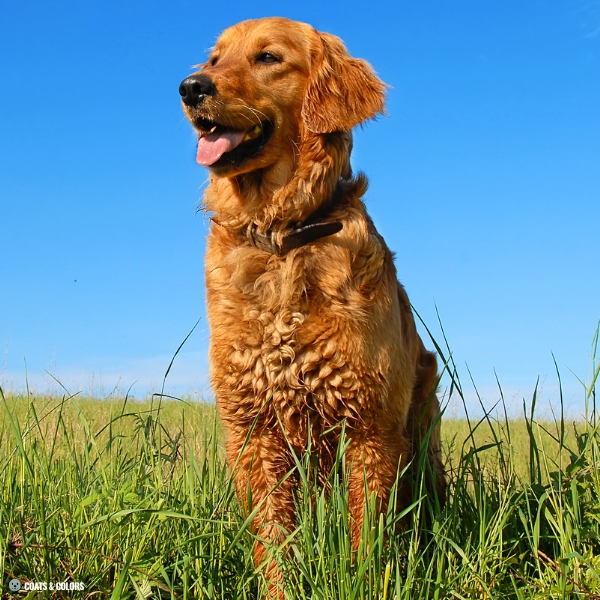

This is an incomplete dominant trait with a dose-dependent effect.
Having one copy causes a wavy coat (Cu/N) while having two copies (Cu/Cu) can give a curly coat.
And some Goldens look like they have quite some real curls, don’t they?
Learn More
Links
[1] American Kennel Club (AKC): Official Standard of the Golden Retriever (pdf)
[2] Fédération Cynologique Internationale (FCI): Golden Retriever Breed Standard (pdf)
[3] The Kennel Club (KC): Golden Retriever Breed Standard
[4] Dreger et al. (2019). True Colors: Commercially-acquired morphological genotypes reveal hidden allele variation among dog breeds, informing both trait ancestry and breed potential. PLoS ONE 14(10): e0223995. https://doi.org/10.1371/journal.pone.0223995
[5] Showsight Magazine 05/2021: Is that Golden Retriever really gold?
[6] Everts, Rothuizen, van Oost. Identification of a premature stop codon in the melanocyte-stimulating hormone receptor gene (MC1R) in Labrador and Golden retrievers with yellow coat colour. Anim Genet 2000. https://doi.org/10.1046/j.1365-2052.2000.00639.x
[7] Schmutz, Berryere. The Genetics of Cream Coat Color in Dogs. Journal of Heredity 98. https://doi.org/10.1093/jhered/esm018

Hi! I’m Steffi. I am a biologist and a big time dog nerd. You are curious about coat color genetics? You’ve come to the right place! Read more.

